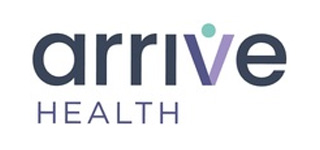Ivantis, Inc., developer of the novel Hydrus® Microstent, a minimally invasive glaucoma surgery (MIGS) device designed to lower eye pressure for open-angle glaucoma patients, announced today the first-ever, four-year follow-up data for a MIGS device in an FDA pivotal trial. The latest findings from the HORIZON study confirm the benefits of the Hydrus Microstent seen in earlier follow-up and establish those benefits are maintained over a longer term, notably a reduced need for invasive secondary glaucoma surgery and medications to control glaucoma. These important benefits were observed without increased safety risk associated with Hydrus surgery. No other MIGS device has presented outcome data in a pivotal trial beyond 2 years.
The HORIZON study is the largest prospective, randomized, controlled trial conducted for a MIGS device and the first to have a global span. The study included 556 patients with mild-to-moderate glaucoma treated across 38 centers in nine countries in North America, Europe, and Asia. The study was designed to demonstrate the safety and effectiveness of the Hydrus Microstent for lowering intraocular pressure (IOP) in glaucoma patients undergoing planned cataract surgery. Patients were randomized 2:1 to receive cataract surgery plus the Hydrus Microstent or cataract surgery alone. The two-year results of the trial provided the foundation for FDA approval of the Hydrus Microstent. At that time, the effectiveness outcomes exceeded those reported in any other MIGS pivotal trial, and the Hydrus Microstent was approved in the U.S. in August 2018.
This first-of-its-kind, four-year update of HORIZON is being presented at the 2020 annual meeting of the American Glaucoma Society (AGS) on Feb. 27 at 7:00AM in Washington, D.C. by Douglas Rhee, MD, professor of ophthalmology and chair of the Department of Ophthalmology and Visual Sciences at University Hospitals / Case Western Reserve University School of Medicine, Cleveland, Ohio.
Key Four-Year HORIZON Findings Being Presented at AGS Include:
- 65% of Hydrus Microstent patients remained glaucoma medication-free, compared with 41% in the cataract surgery only arm. This represents the highest margin of total medication elimination compared to a control group reported for any MIGS pivotal trial.
- Statistical analysis shows that 2.1% of Hydrus Microstent patients required subsequent invasive glaucoma surgery compared with 6.0% of the cataract surgery-only patients, which represents a clinically meaningful and statistically significant difference. This finding is consistent with the HORIZON three-year data, where, for the first time in a MIGS study ,a statistically significant reduction of invasive high-risk secondary surgery was shown.
- The overall safety profile of cataract surgery plus implantation of the Hydrus Microstent was similar to cataract surgery alone, including stabilization of endothelial cell density loss (ECL) from 2 to 3 years and from 3 to 4 years. Peripheral anterior synechiae (PAS) at 4 years remained stable at 13% (4.3% obstructive, 8.7% non-obstructive).
“When we offer treatments to our patients with glaucoma, we have two goals in mind: preserve vision and delay the need for surgery,” said Nathan Radcliffe, MD, associate clinical professor of ophthalmology, New York Eye and Ear Infirmary and editor of Glaucoma Physician, and a pioneer in MIGS procedures. “These data demonstrating that the Hydrus Microstent can continue to reduce the need for surgery after four years is incredibly encouraging and reassuring. But it becomes a game-changer when we see what is happening to patients who do not receive a MIGS device. Of the patients who required filtration surgery in the control arm, a significant portion had mild glaucoma at the outset of the trial. This shows that glaucoma does not discriminate, and it is impossible to predict which of our patients has disease that will or will not advance aggressively. Intervening early with MIGS devices like the Hydrus Microstent at the time of cataract surgery, even for ‘mild’ disease, may go a long way toward preserving vision. We have a responsibility to be offering these types of options to our glaucoma patients.”
“It is important to recognize that patients in clinical trials tend to be more compliant with their medication, so the real-world rates of surgery for glaucoma without a MIGS device may be even higher than those reported in the HORIZON 4-year update,” said William Wiley, MD, medical director of the Cleveland Eye Clinic and Clear Choice Laser Eye Center in Ohio and one of the most experienced MIGS users in the United States. “As a cataract surgeon I tell all my patients with cataracts and glaucoma that this is a one-time chance to treat both conditions at the same time and make a positive lifestyle change to decrease or eliminate the need for medication drops. It is reassuring to see the clinical benefit the Hydrus Microstent is providing compared to cataract surgery alone continues to be maintained now through four years.”
“It was an organizational choice, not a regulatory requirement, to follow patients beyond two years for effectiveness, and we are proud that we have sponsored this level of clinical science, planting the flag with twice the follow-up duration of any other MIGS pivotal study,” said Dave Van Meter, president and CEO of Ivantis, Inc. “Glaucoma is a long-term, progressive disease that many patients live with for decades. To see, after four years, that use of the Hydrus Microstent equated to three times fewer patients undergoing ‘hole in the eye’ surgery is tremendously gratifying for us and demonstrates once again that the Hydrus Microstent delivers ‘best in class’ outcomes in the MIGS category. As a recognized leader in evidence-based medicine in MIGS , we intend to continue to follow HORIZON patients out to five years.”
About the Hydrus Microstent
Roughly the size of an eyelash, the Hydrus Microstent is a next-generation MIGS device designed to reduce eye pressure by reestablishing flow through Schlemm’s canal, the eye’s natural outflow pathway. When placed in the canal during minimally invasive microsurgery, the device restores the flow of fluid in the eye, using a tri-modal mechanism of action:
- The Hydrus Microstent creates a bypass through the trabecular meshwork, allowing outflow of aqueous humor.
- It then dilates and scaffolds Schlemm’s canal to augment outflow.
- Its length spans 90 degrees of the canal to provide consistent access to fluid collector channels in the eye.
The Hydrus Microstent is one of the most rigorously researched and thoroughly studied MIGS devices, with more than 4,000 cases treated globally in controlled clinical studies and registries, in patients with a wide range of disease severities.
About Ivantis
Ivantis, Inc. is a privately held company established in 2007 to design, develop and commercialize new technologies to treat eye disease. Investors include New Enterprise Associates, Delphi Ventures, Foresite Capital, RA Capital Management, Ascension Ventures, EDBI, GBS Ventures, MemorialCare Innovation Fund, Merieux Development, and Vertex Healthcare. The company is headquartered in Irvine, California.
Ivantis® and Hydrus® are registered trademarks of Ivantis, Inc. All rights reserved 2019.



